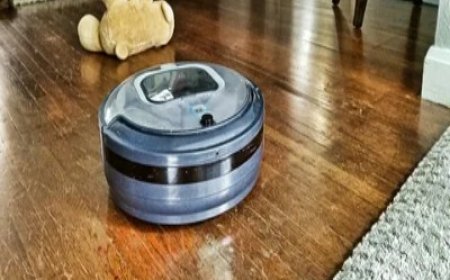Rice Husk Reimagined: Boosting Both Farms and Industries
Rice husk is often considered a byproduct of rice milling, but its significance extends far beyond waste material. This unassuming agricultural residue has a rich array of uses in both agricultural and industrial sectors, making it a valuable resource for a variety of applications. The rice husk is the hard outer shell that surrounds the rice grain, and it is typically removed during the milling process. Traditionally, rice husks were discarded as waste, but with growing awareness of environmental sustainability and resource optimization, rice husk supplier have gained recognition for their numerous benefits and versatile applications.
In this article, we will explore the various uses of rice husk, including its agricultural, industrial, environmental, and economic importance. By examining its composition, benefits, and the technologies employed to harness its potential, we can appreciate how rice husks contribute to both agricultural productivity and industrial growth.
1. Composition and Properties of Rice Husk
Rice husk is primarily composed of cellulose, hemicellulose, lignin, and silica. It contains about 20-25% cellulose, 30-35% hemicellulose, 25-30% lignin, and 10-15% silica. The high silica content is one of the key factors that make rice husk so valuable in various industries. Silica is known for its strength, durability, and resistance to high temperatures, which makes it an ideal material for use in construction, ceramics, and even electronic components.
The cellulose and hemicellulose content of rice husk makes it a good candidate for bioenergy production, such as biofuels or biogas. These components can be broken down and processed into energy, contributing to renewable energy initiatives. Furthermore, the lignin content gives rice husk its strength and structure, making it useful in creating bio-based materials and composites.
2. Agricultural Applications of Rice Husk
2.1. Soil Fertilizer and Conditioner
Rice husk is rich in organic matter and can be used as a soil conditioner. When composted, rice husk adds valuable nutrients to the soil, improving its texture, aeration, and water-holding capacity. The high silica content also contributes to soil health, as it strengthens plant cell walls, making them more resistant to pests and diseases. Farmers often use rice husk as a supplement to improve soil structure and fertility.
In addition to being a soil conditioner, rice husk can be used as a mulch to retain moisture in the soil and prevent weed growth. The mulch also decomposes over time, providing nutrients that enhance soil fertility. Mulching with rice husk is especially beneficial in regions with hot, dry climates, where water conservation is a priority.
2.2. Animal Bedding and Feed
Rice husk is commonly used as a bedding material for livestock, particularly poultry and cattle. It provides a comfortable, dry, and absorbent surface for animals, reducing the need for costly bedding materials. The husks ability to absorb moisture and control odors makes it a practical choice for animal bedding in large-scale farming operations.
In some cases, rice husk is also used as a feed supplement for livestock. It is ground into powder and mixed with other feed ingredients to provide additional fiber. Although rice husk is not highly nutritious, its high fiber content can aid in digestion and promote the overall health of livestock.
3. Industrial Applications of Rice Husk
3.1. Bioenergy Production
One of the most important industrial uses of rice husk is its potential as a bioenergy source. Rice husk can be burned as biomass fuel to generate heat and electricity. The high energy content of rice husk makes it a valuable alternative to conventional fuels such as coal and wood. Biomass power plants that use rice husk as a fuel source are increasingly being adopted in rice-producing countries, particularly in Asia, where rice cultivation is widespread.
Rice husk can also be converted into biochar, a form of charcoal produced through a process called pyrolysis. Biochar has numerous applications in agriculture and environmental management, including improving soil fertility, reducing greenhouse gas emissions, and sequestering carbon in the soil. Biochar produced from rice husk is particularly beneficial for soils in tropical regions, where it helps improve soil quality and increase crop yields.
3.2. Rice Husk Ash in Construction
The ash produced from burning rice husk has many industrial uses, particularly in the construction industry. Rice husk ash (RHA) is rich in silica and can be used as a substitute for traditional cement in concrete production. When mixed with lime, RHA forms a binder that helps improve the strength and durability of concrete. Using rice husk ash in construction not only reduces the need for cement but also provides an eco-friendly alternative that lowers the carbon footprint of construction projects.
RHA can also be used in the production of bricks, tiles, and other building materials. It enhances the thermal and fire-resistant properties of these materials, making them suitable for high-temperature applications. Additionally, the incorporation of rice husk ash in construction materials helps recycle waste and reduce environmental pollution.
3.3. Silica Extraction for Industrial Use
The high silica content in rice husk makes it an important source of silica for various industries. Silica extracted from rice husk is used in the production of glass, ceramics, and electronics. In the glass industry, silica is a key ingredient in the manufacturing of high-quality glass products. In the electronics industry, silica is used in the production of semiconductors, microchips, and other electronic components.
The process of extracting silica from rice husk involves burning the husk at high temperatures to convert the silica into a pure form. This extracted silica can be further processed into various products, such as silica gel, which is used as a desiccant in packaging and as a catalyst in chemical processes.
3.4. Rice Husk as a Raw Material for Biomaterials
Rice husk has gained attention as a potential raw material for the production of biomaterials, particularly biodegradable plastics and composites. The cellulose, hemicellulose, and lignin components of rice husk can be processed into bioplastics, which are environmentally friendly alternatives to petroleum-based plastics. Rice husk-based bioplastics can be used in packaging, agricultural products, and consumer goods.
In addition to bioplastics, rice husk can be used in the production of bio-composites, which are materials made from a combination of natural fibers and polymers. These composites are used in the automotive, construction, and furniture industries, offering a sustainable alternative to traditional composite materials made from synthetic fibers.
4. Environmental Benefits of Rice Husk Utilization
4.1. Waste Reduction and Recycling
The use of rice husk as a resource contributes to waste reduction and recycling efforts. Instead of being discarded as waste, rice husk is converted into valuable products that have a positive impact on the environment. By using rice husk in various industries, we can reduce the environmental burden associated with the disposal of agricultural waste, such as burning rice husk in open fields, which contributes to air pollution and greenhouse gas emissions.
4.2. Reducing Greenhouse Gas Emissions
The burning of rice husk in biomass power plants and other industrial applications helps reduce greenhouse gas emissions by replacing fossil fuels with renewable biomass. Biomass energy production is considered carbon-neutral, as the carbon dioxide emitted during the combustion process is offset by the carbon dioxide absorbed by the rice plants during their growth. By using rice husk as a bioenergy source, we can help mitigate the impact of climate change and promote sustainable energy solutions.
4.3. Carbon Sequestration with Biochar
The production of biochar from rice husk also offers environmental benefits in terms of carbon sequestration. Biochar is a stable form of carbon that can be stored in the soil for long periods, reducing the amount of carbon dioxide in the atmosphere. This process helps mitigate global warming and provides an eco-friendly way to store carbon.
4.4. Improving Soil Health and Reducing Chemical Fertilizer Use
As a soil conditioner and organic mulch, rice husk helps improve soil health and fertility. By reducing the need for chemical fertilizers, rice husk contributes to sustainable agriculture practices. The use of rice husk in soil management helps promote biodiversity, improves soil structure, and reduces the environmental impact of intensive farming practices.
5. Economic Implications of Rice Husk Utilization
5.1. Job Creation and Economic Growth
The growing recognition of rice husk as a valuable resource has led to the creation of new industries and job opportunities. Biomass power plants, rice husk-based industries, and research into innovative applications of rice husk all contribute to local economies. In rural areas, where rice cultivation is a major economic activity, utilizing rice husk as a resource can provide additional income opportunities for farmers and rural communities.
5.2. Cost Savings for Farmers
By utilizing rice husk as a soil conditioner, mulch, or livestock bedding, farmers can reduce their dependence on costly agricultural inputs. The use of rice husk helps lower the cost of production while improving the quality and yield of crops. Moreover, rice husk can serve as an additional revenue stream for farmers who sell their husk to industries that use it for bioenergy or material production.
5.3. Promoting Sustainable Development
The use of rice husk in various applications aligns with the principles of sustainable development. By harnessing rice husk's potential, we can reduce waste, improve resource efficiency, and promote eco-friendly industries. Sustainable utilization of rice husk can contribute to achieving environmental goals such as reducing carbon emissions, conserving natural resources, and promoting green technologies.
6. Challenges and Future Directions
Despite the numerous benefits, there are challenges associated with the large-scale utilization of rice husk. One of the main challenges is the lack of infrastructure and technology for processing and utilizing rice husk efficiently. In some regions, rice husk is still considered a waste product, and its potential remains untapped.
Additionally, there is a need for further research and development to optimize the processing techniques for extracting silica, bioenergy, and biomaterials from rice husk. The economic feasibility of these processes depends on the availability of cost-effective technologies, and government support may be needed to foster innovation and incentivize the development of rice husk-based industries.
Note:- Purchase affordable rice husk ash in India
Conclusion
Rice husk is a valuable byproduct with a wide range of applications in agriculture, industry, and the environment. Its potential to improve soil fertility, reduce waste, generate bioenergy, and produce sustainable materials positions it as a key resource for sustainable development. As awareness grows and technologies improve, rice husk will continue to play an increasingly important role in promoting environmental sustainability and economic growth. By tapping into its full potential, we can create a circular economy where agricultural residues like rice husk are transformed into valuable products that benefit both industries and communities.










































